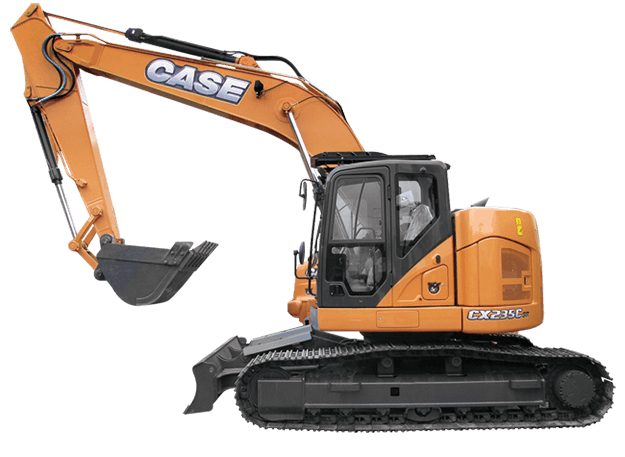
If you’re in the market to hire an Excavator, you may soon find out that there are many different types to choose from. Depending on your project, there will be an excavator better suited to your needs. Although this may seem like a complicated task, it needn’t be. There are excavators ranging from 0.5 tonne right through to over 500 tonnes. So where do you start when looking to choose an excavator for hire? We have provided a list of the most common excavators and their uses, as well as the jobs they’re best suited to.
Standard excavator
This is the most common excavator found on most job sites. It ranges between 6 to over 500 tonnes and is used for a wide range of projects. From a small construction job to a digging job on a mining site, this excavator is suited to the job. However, digging isn’t it’s only purpose. These excavators are also very handy for material handling, dredging jobs, demolition sites and even snow plowing. This excavator is the most versatile of equipment due to its many available uses.
Mini or micro excavator
As the name suggests, these excavators are a smaller, or “mini”, version of a standard excavator. Ranging from zero to 5 tonnes, these smaller pieces of equipment are usually suited to small area projects. If the project is in a tight space or has a small access area, this is the excavator of choice. They are often used for backyard projects, such as for digging a swimming pool, pond or landscaping project.
Knuckle boom excavator
One of the key features of this particular excavator is the fact that it has an extra joint on it’s arm compared to a standard excavator. This extra joint provides extra flexibility of movement as it can then swing right or left when digging. It works just like a standard excavator, however due to the extra joint, it can reach in places that may not be possible with a standard excavator. The knuckle boom excavator is often used in cramped spaces or excavating around large obstacles.
Long reach excavator
As the name suggests, the long reach excavator has a longer range of reachability. It features an arm range reaching from 39 feet right through to a maximum length of 95 feet. To give you an idea of how this compares to a standard excavator, a standard excavator can only reach up to a maximum of 41 feet. This excavator makes a perfect choice for dredging and demolition jobs where a standard excavator arm just would not be able to reach.
Spider excavator
As something that looks like it came straight out of a futuristic movie, the spider excavator is often considered a niche piece of equipment due to its uses. It is also known as the “walking excavator” due to its featured legs, rather than tracks like on a standard excavator. This excavator can be used on all types of terrain, including uneven ground, steep ditches or an inclined surface. It is used for projects where a standard excavator would have trouble entering or excavating on the site.
Swamp excavator
Another piece of equipment used for very specific projects, the swamp excavator is used in areas where it is required to be on water. It’s also known as an amphibious excavator and is perfect for dredging jobs. It utilises special tracks that allow the equipment to float on water.
Zero swing excavator
The zero swing excavator has a very limited swing capability. It is only able to swing its arm within the constraints of the track width, which means it’s the perfect solution for projects that are in tight, confined areas.
Other factors to consider
Once you understand your project and it’s needs, you may also need to consider a few other factors before choosing your equipment.
Think about the site and the excavator you will be using. Can you picture it on the site? It’s important to also consider any potential hazards and the needs of your site as to which excavator you will choose. The location and size of accessways will heavily determine the excavator you choose. After all, there is no point in having an excavator that cannot even access the job.
Other factors you will need to take into consideration are the engine power of your equipment, weight, size and bucket capacity. All of these factors will impact your decision and the piece of equipment you will ultimately choose. You may also want to consider what attachments you will need, if any. Attachments include buckets, couplers, rippers and hammers. Generally, you would choose the same manufacturer as your excavator for these attachments to ensure compatibility.
Because different projects will require different types of machinery, it is often more suitable to hire an excavator rather than purchase one outright. The locations, needs and accessibility will all determine the equipment needed and these variables will often change each time you have a new project. Because of this, hiring is often a much more flexible option for your construction and excavating needs.
For excavator hire, and other earthmoving equipment and attachments, visit Solution Plant Hire.



